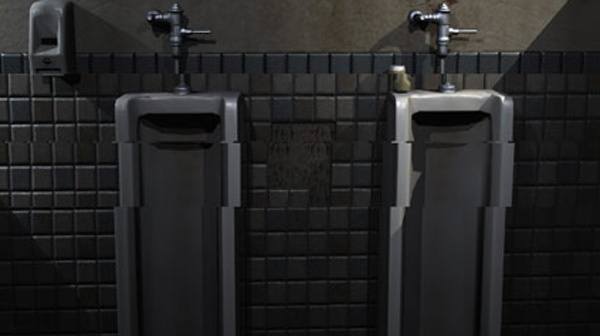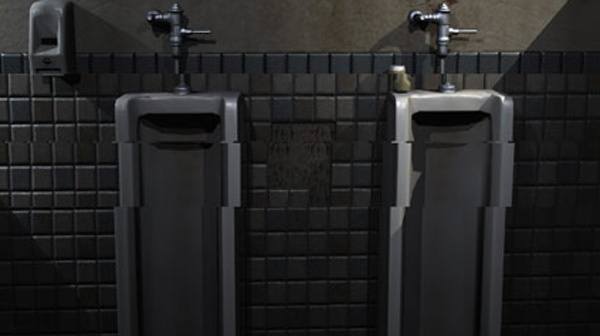
No More Tears For Digital Signage?
October 24, 2013 by Dave Haynes
Bryan Mongeau of BroadSign sent me a note the other day about a new graphics capability announced by Nvidia, suggesting it represented a big opportunity and technology shift for the digital signage sector.
The announcement had to do with something called NVIDIA G-Sync – a graphics card enhancement that changes the way display monitors handle the signals they get from media players and ideally eliminates the video tearing, judder and other flaws that we all see when videos gets played back on screens.
I get the notion at a high-level, but you need a propeller beanie with very big prop blades to thoroughly undderstand it. So I asked Bryan, who is BroadSign’s VP Technology and the guy driving all software development, if he’d do a Q&A.
Q – OK, so I’ve seen the tech news coverage on this, but it’s framed around the gaming market. What does this mean for the digital signage sector?
Bryan Mongeau: The gaming market is certainly driving this innovation, but the digital signage sector can greatly benefit from it because the underlying technology is the same. When a video is displayed by a digital signage player, it is using a hardware accelerated surface like OpenGL or Direct3D. This is exactly the same APIs used by games and the techniques used to avoid tearing and stuttering are the same. So the all the benefits that apply to gaming would also apply to digital signage.

Video tearing sample from PCPER
Q – It’s proprietary and probably adds more cost, and we know what wild spenders end users are in this space. What’s going to get them to invest in this tech?
BM: Early numbers from Anandtech hint that the first generation G-sync module will add about 100$ to the cost to the display. The early adopters will come in deployments where image quality really counts. The bigger the display, the more obvious the benefit. I am optimistic that over a 2-3 year period, the cost of this technology will be driven down by higher volumes and licensing deals, making it commonplace. Although nvidia is first to market with this, the innovation is in the display controller, not the GPU.
What will most likely convince end users to adopt this is to see it in action – it really will make the entire display far more fluid. Animations of all types will appear smoother. Of course not everyone will adopt it, but when you drop 3000$ or more on that big 80 inch display, an extra 100$ investment to get the maximum performance from your screen seems reasonable to me.
Q – I sometimes have to point out tearing and stuttering to people before they even notice it. How much of a problem is it, and is the rise of HD, 2K and maybe even 4K going to make the need for a solution really obvious?
BM: Tearing and stuttering are truly industry-wide issues. The problem is exacerbated by the fact that most content we see lacks the natural, film-like scenes where these rendering flaws are less apparent. Instead we see a lot of vector animations with big, sharp-edged blocks of solid color sliding in and out – a worst-case scenario.
I have not seen g-sync myself yet, but if it works the way they describe it, it will revolutionize how computers interface with displays. It heralds the death of the fixed refresh rate. If you have a video that plays at 29.97 FPS, your display will refresh at exactly 29.97 Hz. If the next video in the loop is 59.94 FPS, then the screen will automatically change its refresh to exactly 59.94 Hz. In essence, the screen will adapt the refresh rate for each individual video – and *that* is a real revolution, not marketing fluff.
Q – It sounds like, for simpletons like me, that the easy way to wrap one’s head around this is that if a piece of video is done at 30 frames per second, it would be best to have a matching refresh rate. But right now, monitors refresh at twice that rate or faster, and the video processing is causing flaws like video tearing. Is that a fair statement?
BM: In a general sense that is correct Dave. The subject is rather deep, but suffice to say that the concept of a fixed “refresh rate” was only really required for CRTs because they had an actual electron gun exciting the phosphors at a fixed interval. When LCDs came along mid-90’s, there was no need anymore to refresh the display at a fixed interval like that. However, everyone still had their VGA graphics cards and cables at the time so in the name of backwards compatibility, they adopted the fixed refresh rate. Because of that choice, we have been collectively carrying this baggage and the unwanted side-effects for 20 years now, long after the CRT has died off.
Due to this fixed refresh rate, if you don’t synchronize the video to the refresh rate, you get tearing. Tearing appears when a screen refresh happens in the middle of drawing a video frame. The top half of the screen shows the current frame while the bottom half the screen still shows the previous frame. This creates a visible “tear” in the scene.
When you synchronize to the refresh rate, you wait until the interval between screen refreshes to draw you frame (called vblank period). Although this technique completely eliminates tearing, it introduces a brand new problem. If your video is 24 fps but your screen is 60 hz, the first video frame will appear on screen for 0.05 seconds, the next frame for 0.03 seconds, and so on. Human eyes are uncannily good at noticing this stuttering effect. An otherwise perfectly smooth pan at 24 fps will stutter on a 60 hz display with v-sync enabled.
A perfect example of the effect can be found below, this pan should be smooth, but winds up stuttering across the screen.
So for years our industry has been forced to choose between two bad options: stuttering or tearing. G-sync is the first attempt I have seen to finally liberate ourselves from the antiquated concept of a fixed refresh rate.
Q – The news suggests the smaller LCD guys are on board, but digital signage is dominated by NEC, Samsung and LG? Unless the big boys adopt this technology, is this just a cool niche for premium installs?
BM: Well Philips and Viewsonic seem to onboard already, and they both produce some large commercial displays. I wouldn’t be surprised if we see this technology appear first in the more specialized big display guys like MRI, GDS, Christie, etc. I hope that in time LG and Samsung will start to incorporate the technology too, although I bet that will require a big push from the console gaming industry. After all, a gaming console is just another computer attached to a display.



Leave a comment